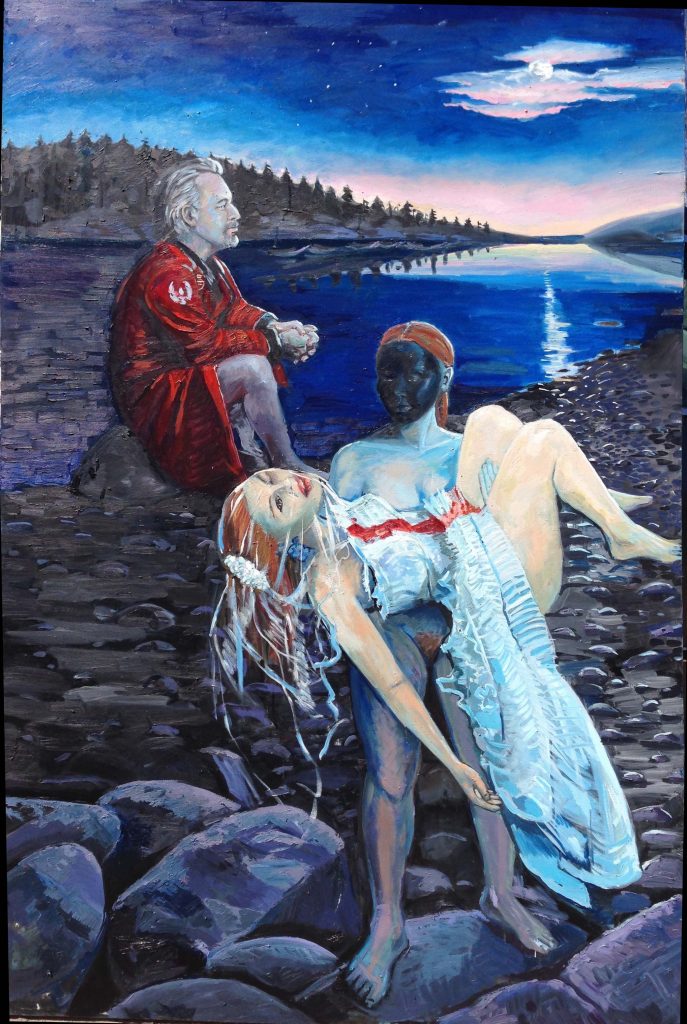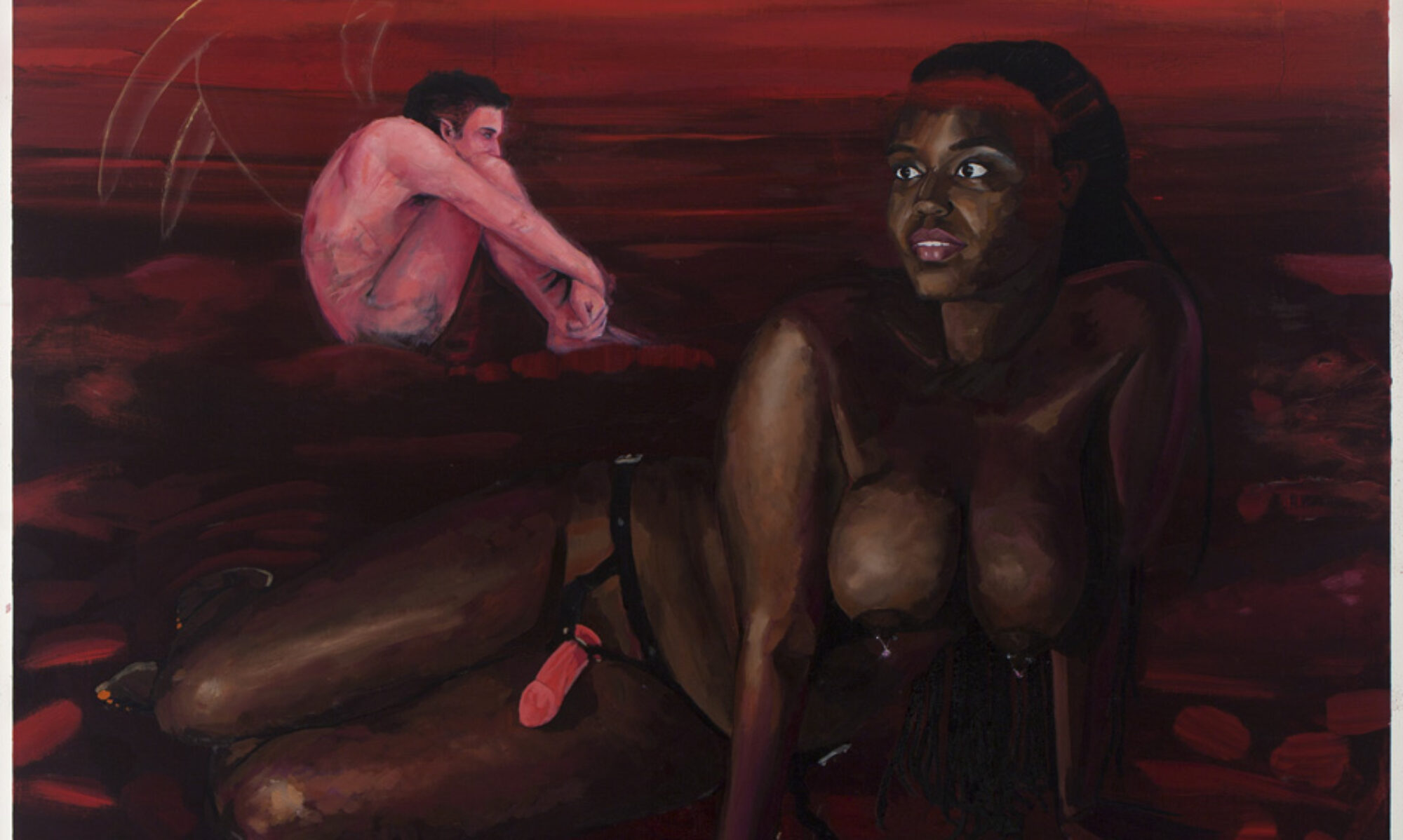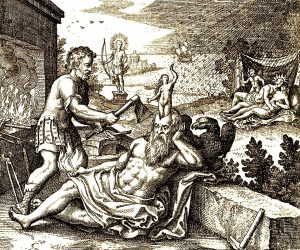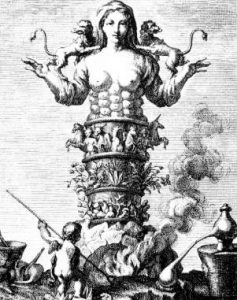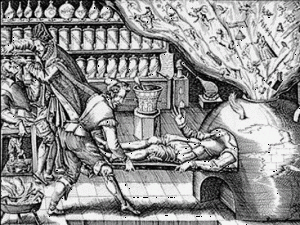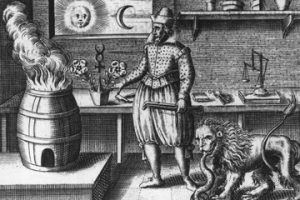I wanted to write about something else that was on my to-do list for my next post, but it wouldn’t come. The poignancy, horror and upheaval in the United States during the nationwide protests against police brutality are too much on my mind. So when I considered writing about the portrayal of Black people in my work, I felt motivated to write.
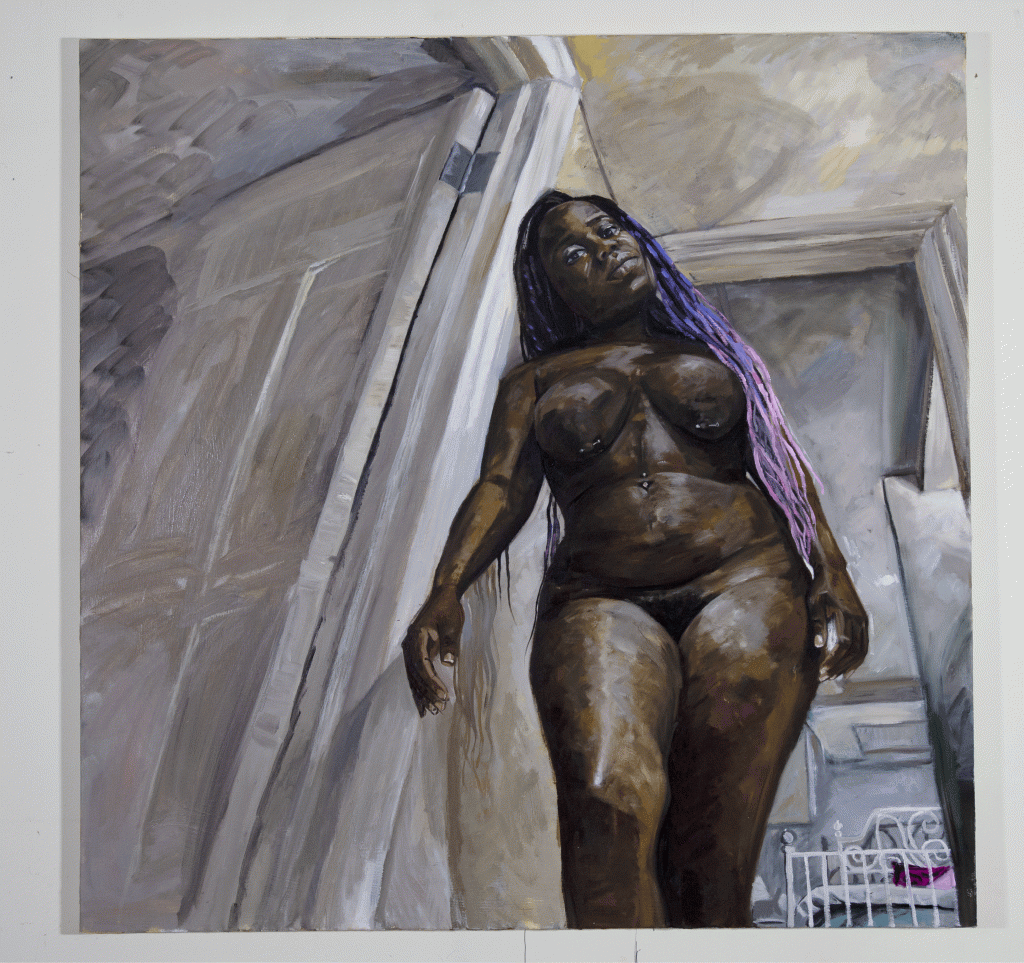
When I started working with alchemy, I studied the various stages of the alchemical process, and a crucial one is called nigredo in Latin. Not a problematic word in itself, it means “the blackening” and refers to the blackening of the alchemical matter prior to it turning to gold. It is a pivotal stage where all is returned to the earth and transmuted, in a sort of death and rebirth. In alchemical engravings of the Renaissance period, artists often used figures to represent mental concepts, and so when I was reinterpreting them for a contemporary audience, I did the same. I painted women in bridal gowns for the albedo, a fireman for the rubedo and I used a Black person for the nigredo. I made the mistake of using images from the internet, as I had recently moved to Quebec and didn’t have any models at the time. In this piece, I was also trying to portray the sacred hermaphrodite, so I painted a Black transwoman. In various studio visits I was told this is problematic, as not only did I not know this person, I didn’t ask permission to paint her. I repainted the image with the permission of a dear friend of mine, Stephanie who I painted several times in recent years. Stephanie was born in Haiti and immigrated to Montreal when she was young. I had her wearing a strap-on to convey the harmony of male and female aspects within the nigredo.
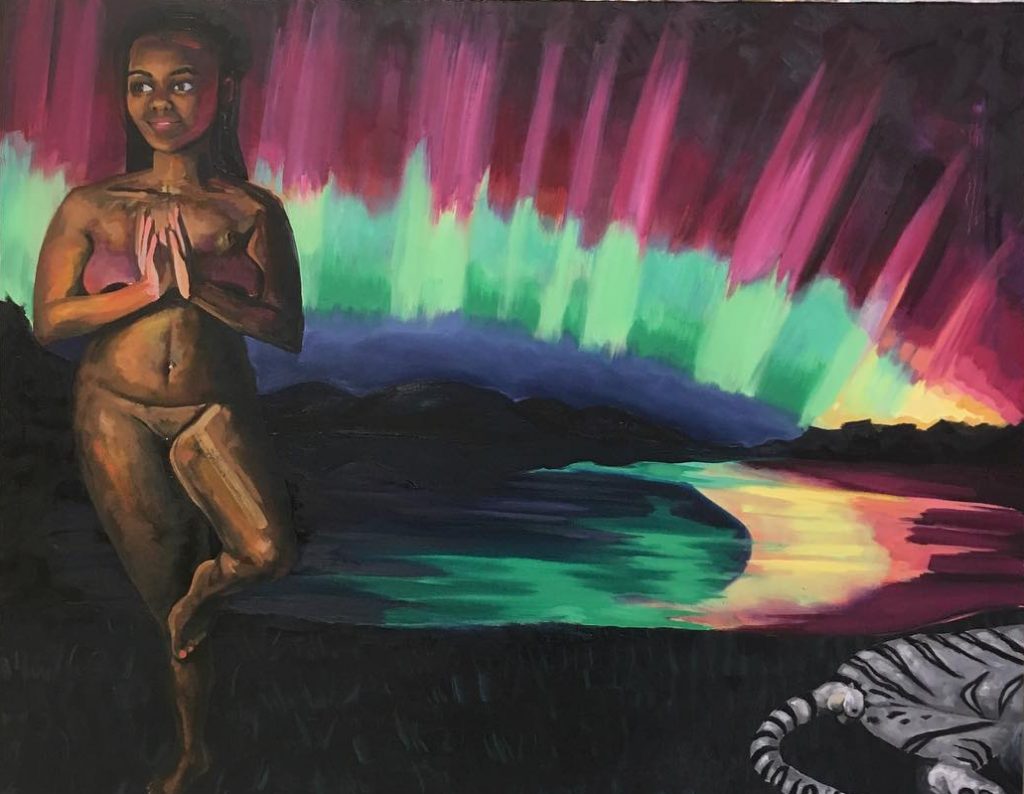
Is it problematic for a white artist to paint a Black person, especially a nude, in an erotic painting? When is it objectifying? When is it regressing to the type of portraying the Other that artists such as Gauguin were famous for? In the studio visits in Montreal, I was also advised to do so by portraying Stephanie in all her humanity and individuality, and I tried my best to do so. It really does look like her, if an alarmed and bizarre version of her. In the painting, she is supposed to be looking so alert because she just woke up, in the mystical sense. The angel in the background (is he Lucifer?) is watching over the process. I wish I had more Black artists as friends, and that at that time I could have asked them for their feedback. I remember when I was taking the photos for the painting of Stephanie she was getting very frustrated because I was anxious about certain poses seeming too submissive or disempowered. She said it is racist that people just can’t see a beautiful woman, they have to see her race first. But I know Black people are not a monolith, they wouldn’t all have the same opinion about a white woman painting them nude.
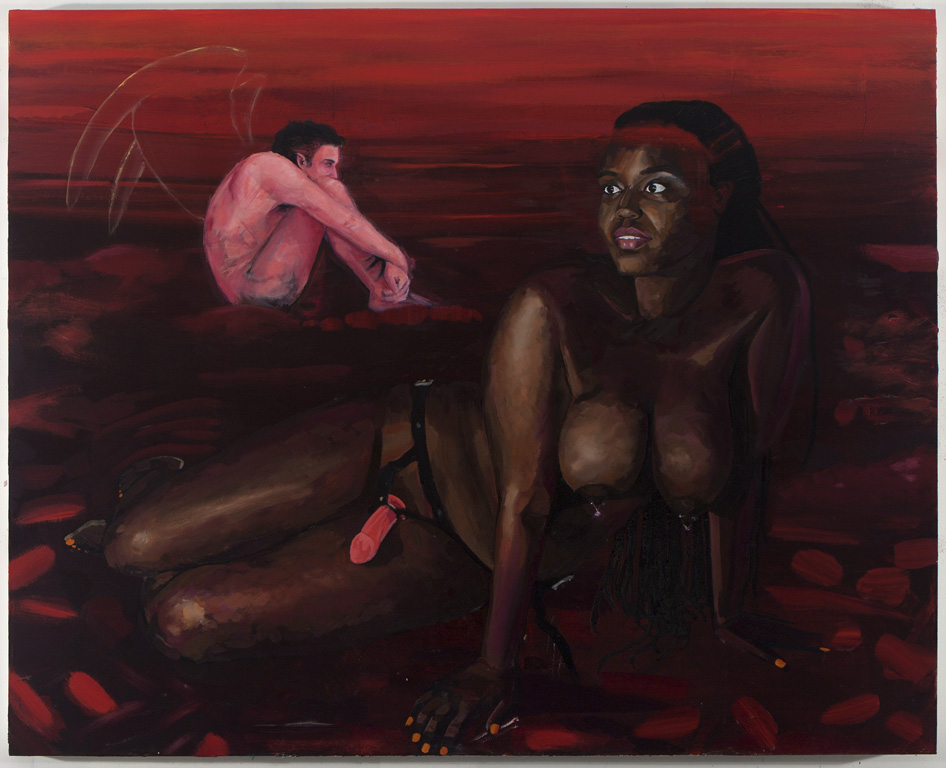
More recently, on sex work Twitter, I had a conversation with a fellow Black performer who was asking herself if she thought she wanted white artists to portray Black people so that they would be represented, or if she thought that they should avoid doing so. The discussion wasn’t conclusive, but the majority believed it needed to be on a case by case basis to see if it was done in an exploitative or respectful way.
My first alchemical painting where the nigredo makes an appearance was a crossover painting between two series. The Bloody Brides and The Alchemical Furnace. Unfortunately, my foolish white privilege didn’t allow me to see what I was doing when I put on blackface for the painting, so it will probably never be shown publicly or sold. I was just thinking of a mask and representing a character who represented that stage of alchemy, at the time I wasn’t thinking of a Black person at all. The blackface aspect of myself is rescuing the bloody bride (also myself), or carrying her body away from a murder scene. I welcome discussions on this topic especially from POC and Black people in particular.
